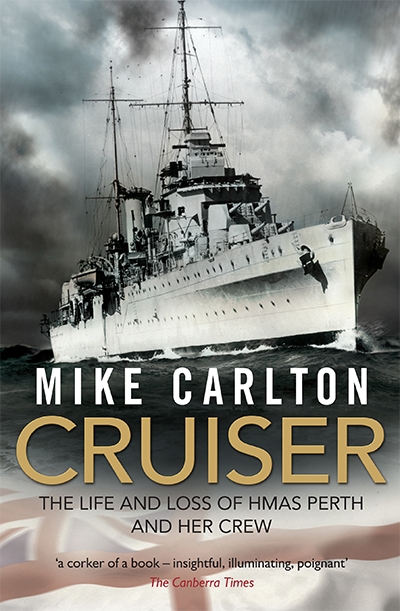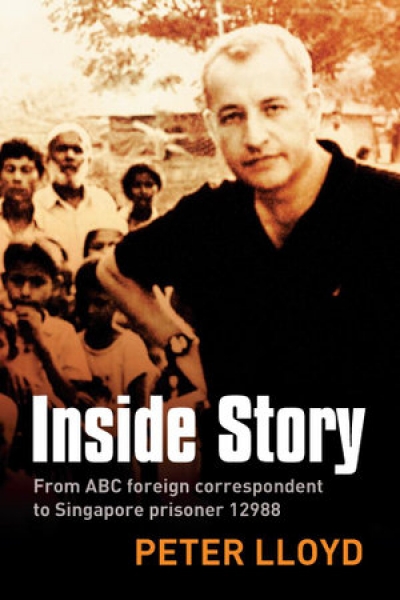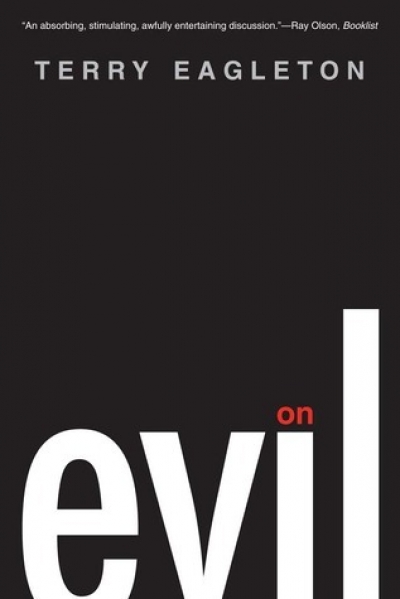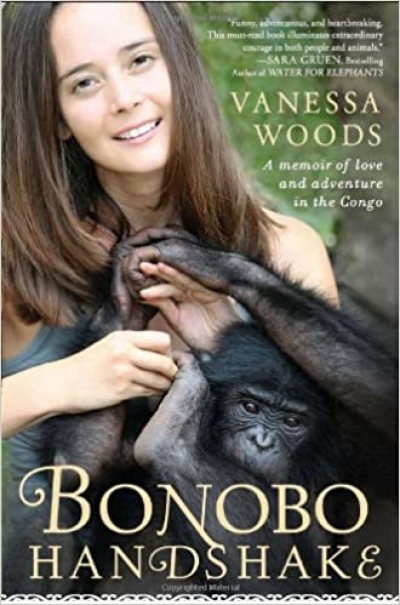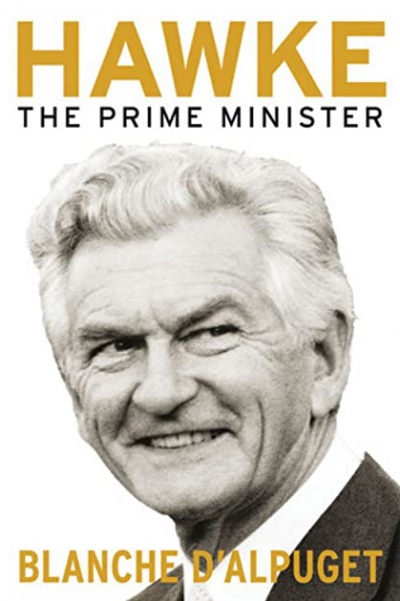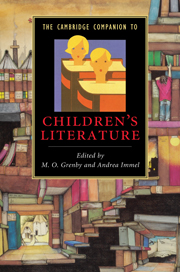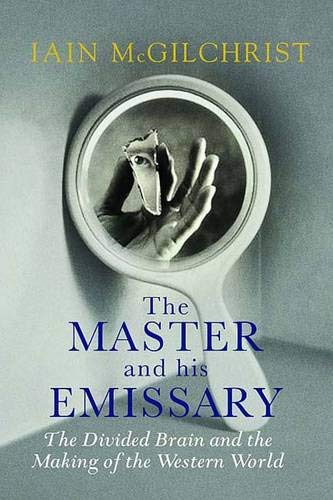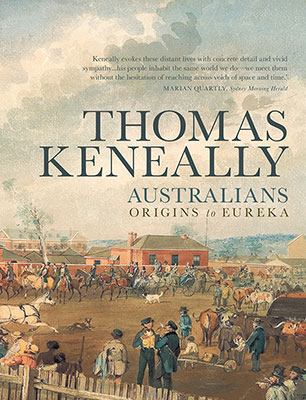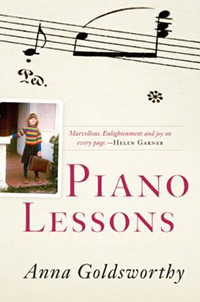Non Fiction
Cruiser: The life and loss of HMAS Perth and her crew by Mike Carlton
Australian war historians usually find their theme in the army. Mike Carlton, a well-known journalist, thinks it is time to praise the Australian warship Perth and its men: ‘They were the flower of Australia’s greatest generation. No other has been so tested.’
... (read more)Inside Story: From ABC correspondent to Singapore prisoner #12988 by Peter Lloyd
Few who saw them will forget the grainy newspaper images of Australian drug traffickers Kevin Barlow and Brian Chambers. Despite high-level diplomatic pleas from the Australian government, they were hanged at Pudu jail in Kuala Lumpur in July 1986 for possessing 180 grams of heroin. In the post-execution mêlée, their bodies were concealed by blankets, but one foot was casually left uncovered. The poignancy of those toes was heart-rending, their vulnerability encapsulating the brutal and ruthless efficiency of law in that region of South-East Asia.
... (read more)One of the more robust responses to what has come to be called the New Atheism has been that of the influential literary critic Terry Eagleton. He weighed into the argument early with an aggressive and widely cited critique of Richard Dawkins’s The God Delusion (2006) in the London Review of Books, in which he charged Dawkins with theological ignorance. He extended his argument in a series of lectures, published as Reason, Faith and Revolution: Reflections on the God debate (2009), which condemned the atheist movement for its allegiance to an outdated form of nineteenth-century positivism and for its optimistic belief in the virtues of progressive liberal humanism. His latest book, On Evil, is a kind of supplement to the debate, in which he attempts to drive home what he considers the naïveté of such a view.
... (read more)Bonobo Handshake: A memoir of love and adventure in the Congo by Vanessa Woods
Even the name is confusing: think of it as Belgian Congo/Zaire/Congo DRC to avoid confusing it with the Republic of Congo/Congo Brazzaville across the river. Officially, the name is Democratic Republic of Congo – DRC – so you could roll out the usually accurate cliché that any country with ‘Democratic’ in the name definitely isn’t that. In fact, the DRC had an election a few years back which was reasonably democratic and certainly inspired an impressive voter rollout.
... (read more)Needless to say, yet needing to be said, Australia’s twenty-third prime minister, R.J.L. Hawke, emerges from this interesting, sometimes engrossing yet disconcerting book smelling like roses. When MUP decided to publish, it must have seemed like a good idea. Deployed on television, Bob and Blanche were a marketing dream. But the result has a fatal flaw; it neither enlarges Hawke as a political leader nor advances d’Alpuget as a writer.
... (read more)The Cambridge Companion to Children's Literature edited by M.O. Grenby and Andrea Immel
Prepare to be affronted, or perhaps just a bit miffed. Although it does not confine itself to works by British writers, you will look in vain for Australian authors in the new Cambridge Companion to Children’s Literature. Among many titles from the United States, Little Women gets its due, as does Little House on the Prairie. Canada’s Anne of Green Gables is there, and so is Salman Rushdie’s Haroun and the Sea of Stories. Scan the index and you will find works of European origin, such as The Swiss Family Robinson and Johanna Spyri’s Heidi. The latter two, of course, could be given honorary citizenship because of their immense popularity in English translation.
... (read more)The Master and His Emissary: The Divided Brain and the Making of the Western World by Iain McGilchrist
What would it be like to possess two brains, each with its own view of the world and each with its own personality? Which one would be in control? Which one would be ‘you’? Of course, none of us literally has two brains. Yet we have two cerebral hemispheres, a right and a left, that in many important respects are duplicates of each other. Normally, the right and left hemispheres communicate extensively with each other, mostly via a large fibre tract known as the corpus callosum. Despite overall similarities in their organisation, there are marked left–right asymmetries in the details of how the hemispheres operate. Compelling evidence for brain asymmetry initially came from two groups of patients: those who have had a stroke affecting just one hemisphere; and those, the so-called ‘split-brain’ patients, who lack a functional corpus callosum connecting the two hemispheres, either because of a congenital defect, or as a result of surgery to ameliorate otherwise intractable epilepsy.
... (read more)Australians: Origins to Eureka, Volume 1 by Thomas Keneally
A number of questions sprang to mind when I heard that Thomas Keneally was writing a three-volume history of Australia from its origins to the present. The first was to wonder how he would fit it into his crowded schedule. Clearly, though, this is not a problem. Keneally has just published another novel. More intriguing was the question as to what Keneally could add to the subject. After all, Australia is not lacking in colonial histories, many written by historians who are skilled writers. As Keneally is primarily a novelist, albeit one with a serious interest in our history and with several non-fiction studies under his belt, would the work reflect the conventions of historical fiction?
... (read more)Of Sugar and Snow: The History of ice cream making by Jeri Quinzio
A remarkable ice cream made in 1991 included two thousand eggs, ninety litres of cream and fifty-five litres of milk. No one but Phillip Searle, Australia’s emperor of ice cream, would have set out to make Ball and Chain, a giant, medieval, spiked weapon which melted in the mouth. The spikes themselves were thirty-centimetre silver-leaf-tipped cones of vanilla ice cream and raspberry sorbet, and these were broken from the enormous ball, which had been sculpted around a heavy iron frame. This included long handles so that the servers, naked but smeared with clay, might carry the weapon through the centre of a rectangle of some 180 diners towards the performance of Music for Ball and Chain, composed by Tony Buck and commissioned by Searle. The musical instruments were indeed a ball and chain.
... (read more)Piano lessons have been a source of joy or frustration for generations of Australians. By the early twentieth century, there was a piano for every three or four Australians. Skill at the pianoforte was an accomplishment that bourgeois parents desired for their children, especially daughters.
... (read more)

